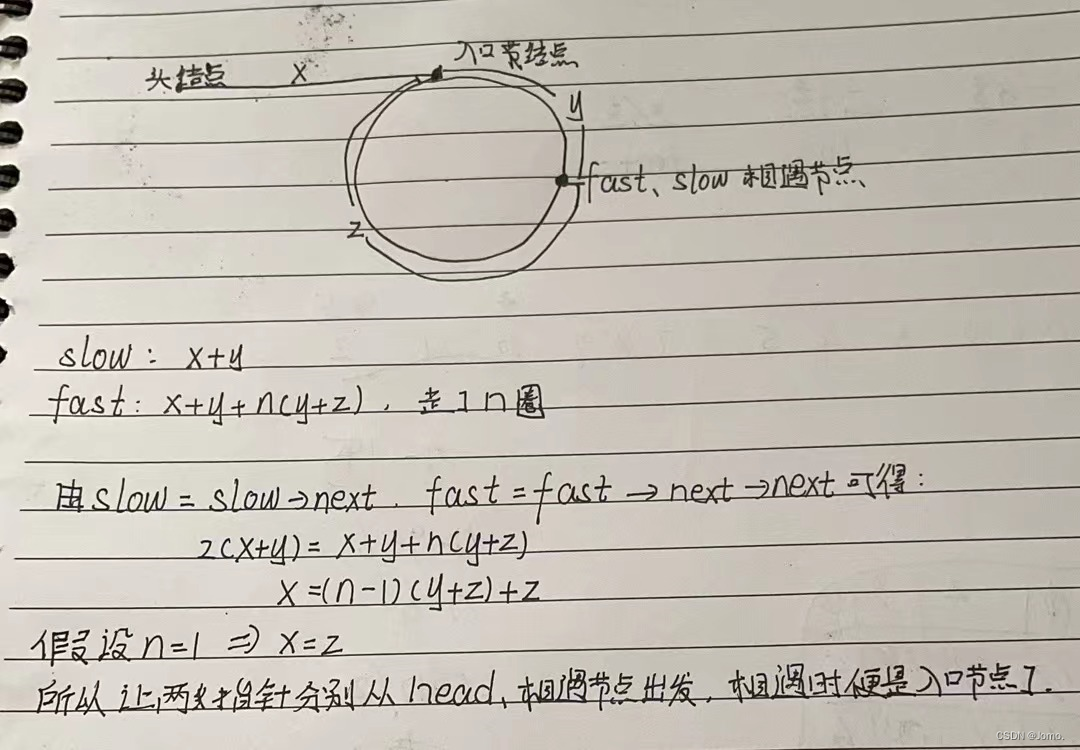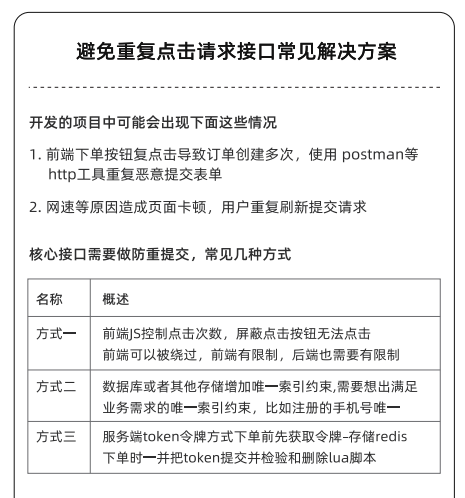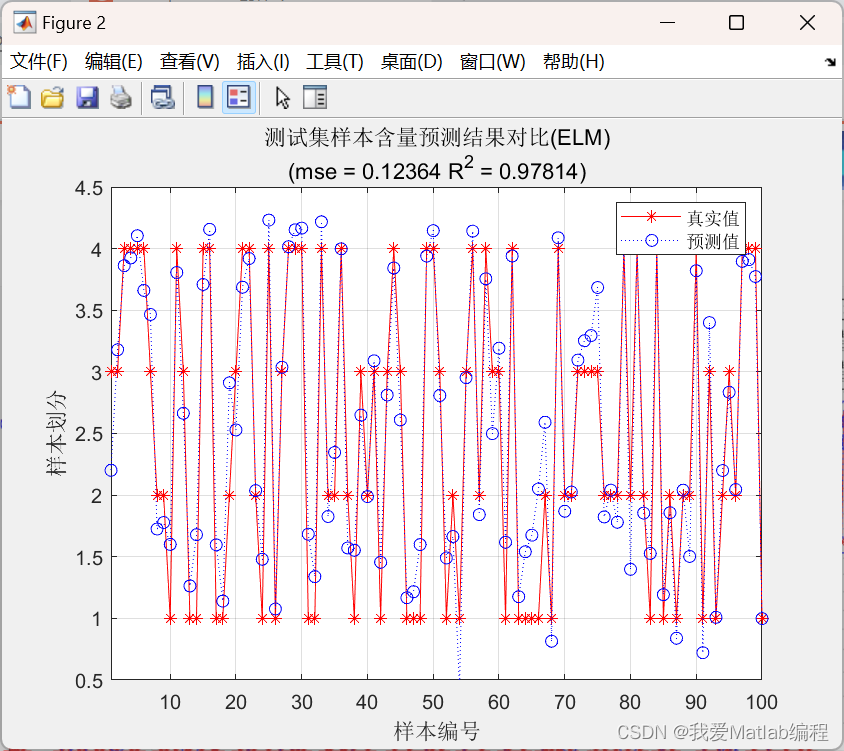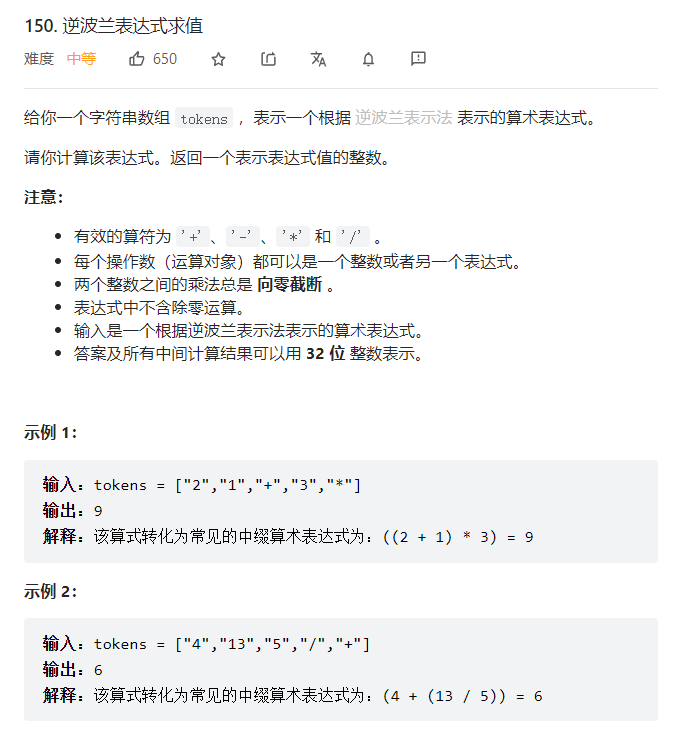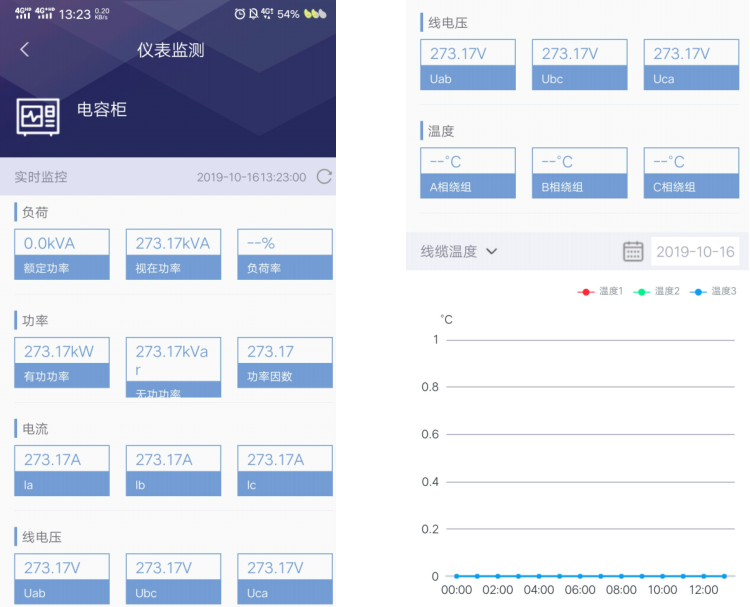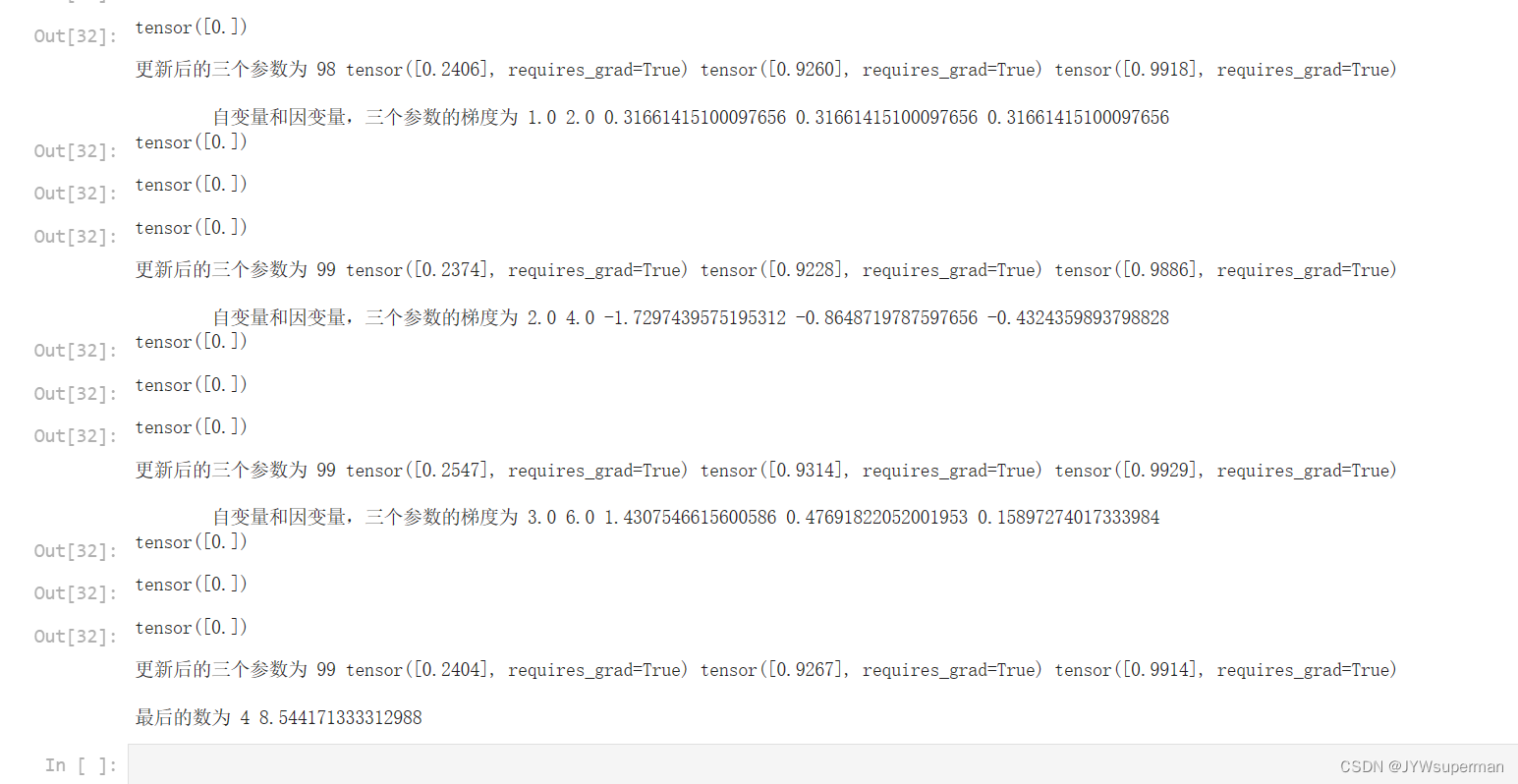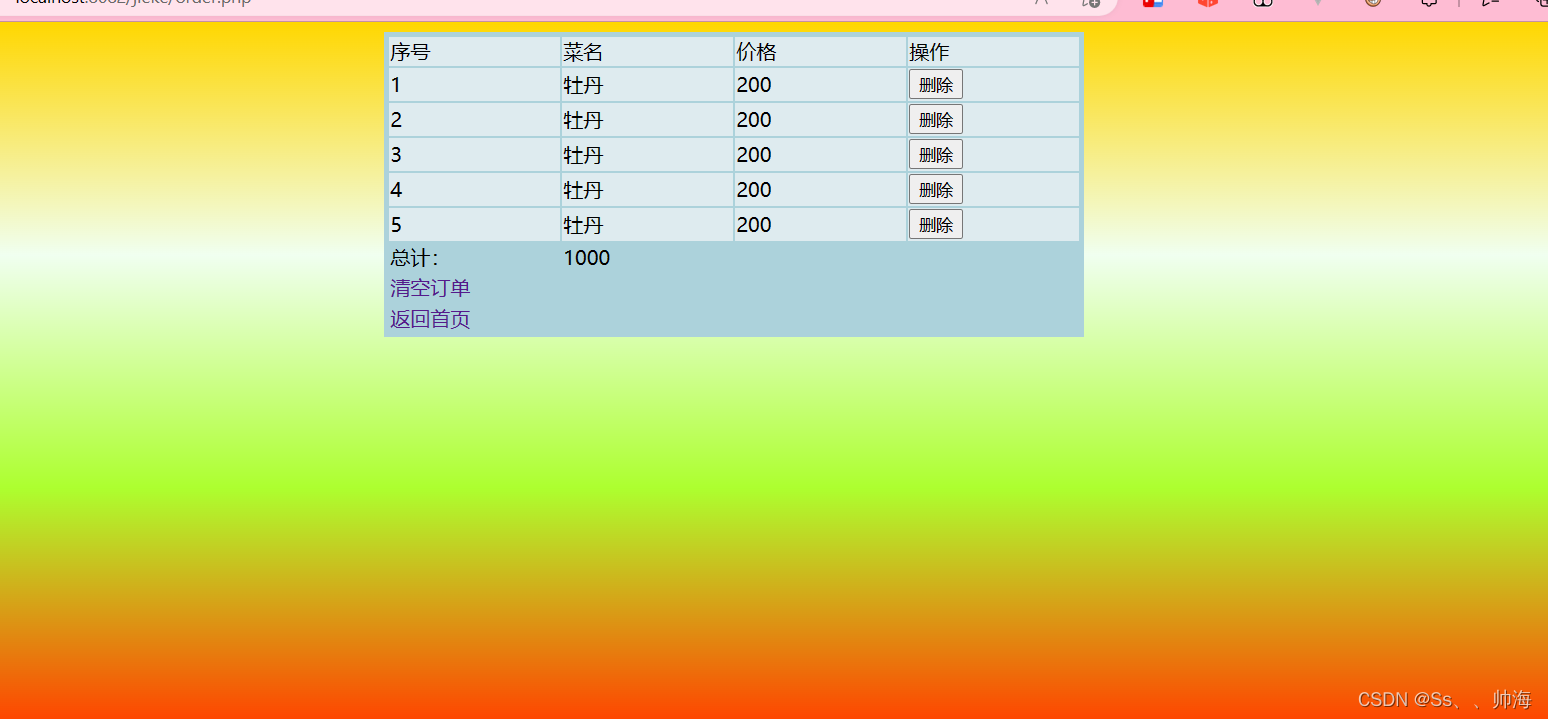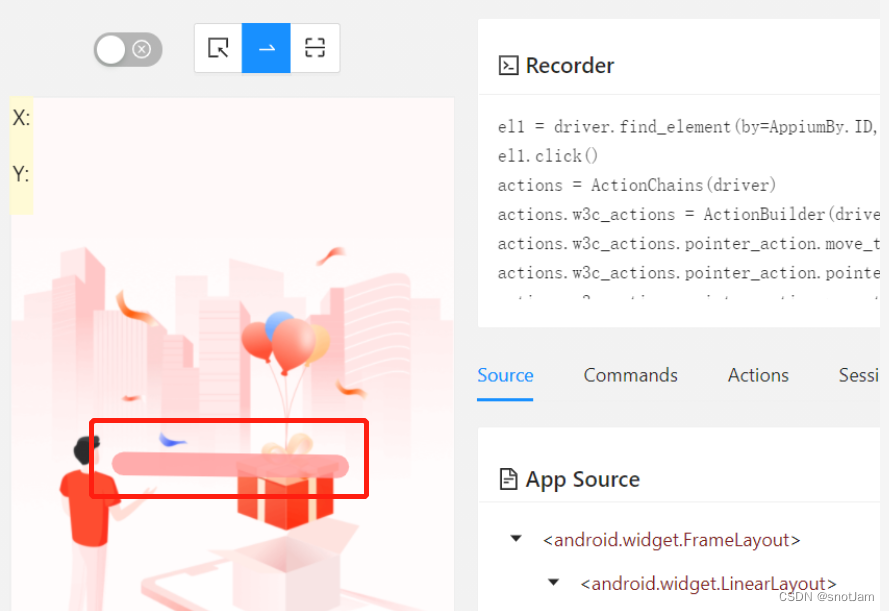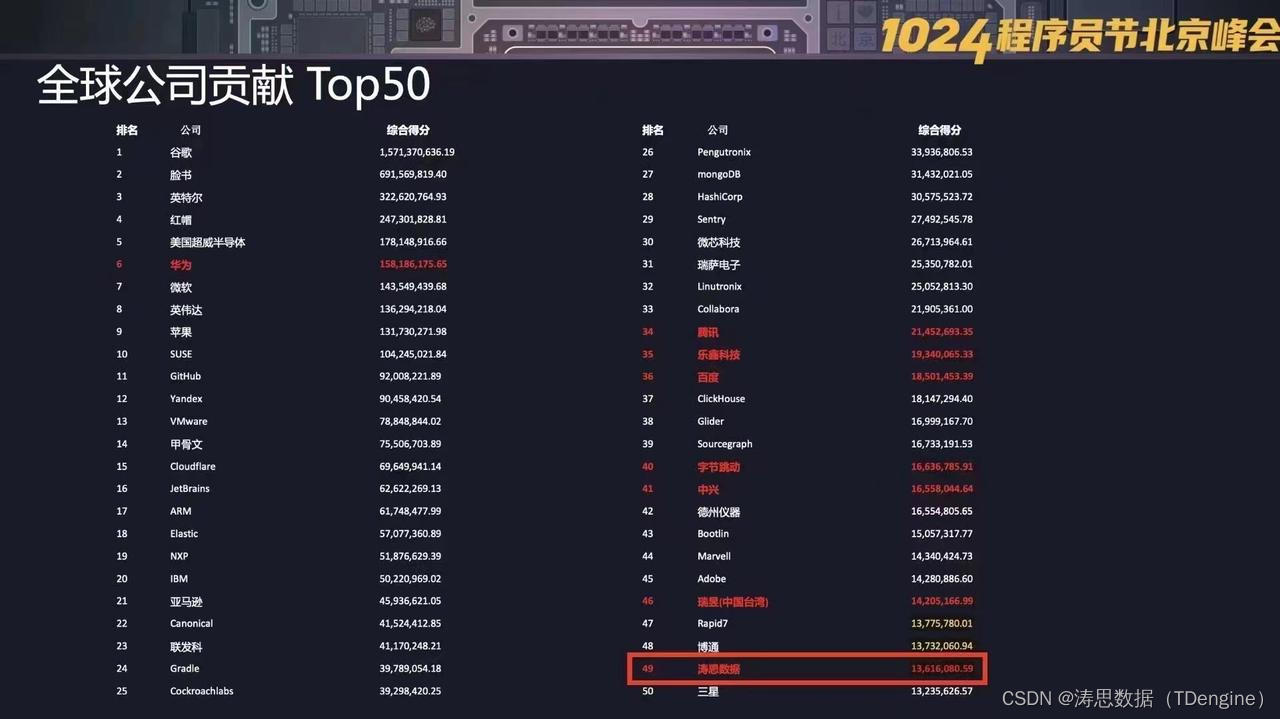作者:✿✿ xxxflower. ✿✿
博客主页:xxxflower的博客
专栏:【数据结构】篇
语录:⭐每一个不曾起舞的日子,都是对生命的辜负。⭐
文章目录
- ✿1.ArrayList的缺陷
- ✿2.链表
- 2.1链表的概念及结构
- 2.2链表的模拟实现
- MySingleList
- ✿3.LinkedList
- 3.1LinkedList的模拟实现
- MyLinkedList
- ✿4.LinkedList的使用
- 4.1 什么是LinkedList
- 4.2LinkedList的使用
- ✿5.ArrayList 和 LinkedList
✿1.ArrayList的缺陷
ArrayList的底层是一段连续空间的数组,在ArrayList位置任意位置插入或者删除元素时,就需要将后续元素整体往前或者往后移动,时间复杂度为O(n),效率较低。所以ArrayList不适合做任意位置插入和删除比较多的场景。因此,java集合中又引入了LinkList,即链表结构。

✿2.链表
2.1链表的概念及结构
链表是一种物理存储结构上非连续存储结构,数据元素的逻辑顺序是通过链表中的引用链接次序实现的 。如图所示就是一个单链表。

注意:
-
由上图可得,链式结构在逻辑上是连续的,但是在物理上不一定连续。如图:
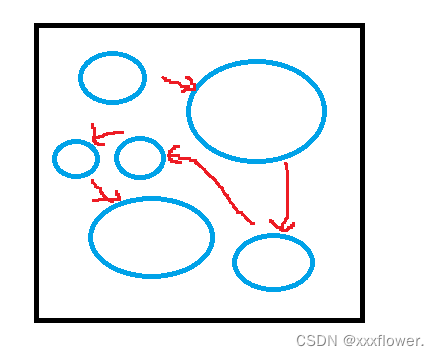
-
现实中的节点一般都是从堆上申请出来的。
-
从堆上申请的空间,是按照一定的策略来分配的,两次申请的空间可能连续,也可能不连续。
实际中链表的结构非常多样:
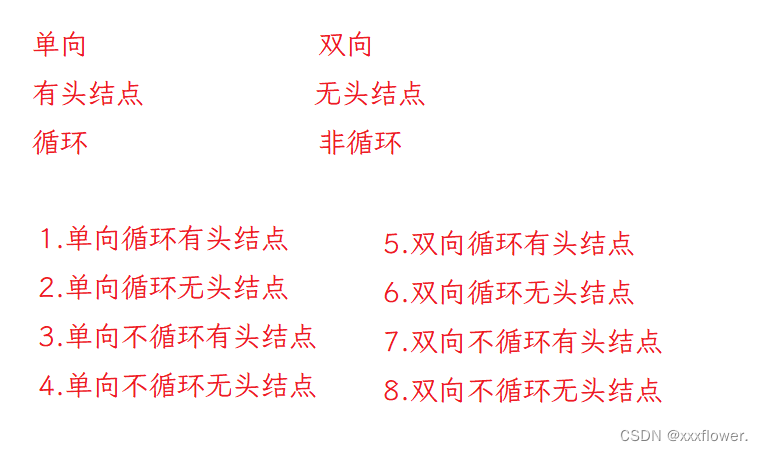
我们需要重点学习的有: -
单向非循环无头结点链表
结构简单,一般不会单独用来存数据。实际中更多是作为其他数据结构的子结构,如哈希桶、图的邻接表等等。另外这种结构在笔试面试中出现很多。
- 无头双向链表
在Java的集合框架库中LinkedList底层实现就是无头双向循环链表。
2.2链表的模拟实现
MySingleList
使用内部类定义一个节点类。
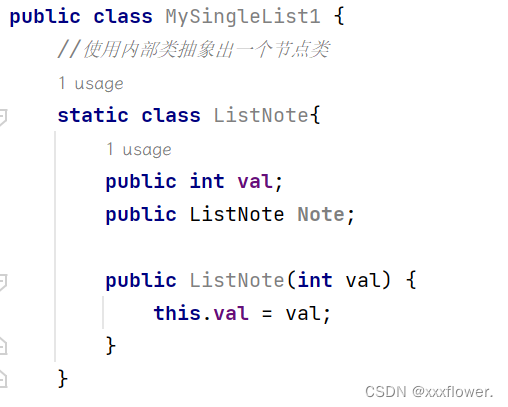
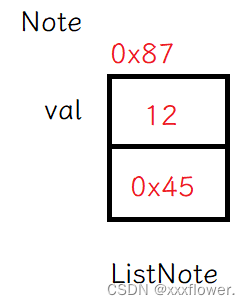
打印链表:
1.为了保证head的值不变,定义一个cur
当cur != null(循环条件)时走完整个链表。
2.打印cur.val
3.cur = cur.next.
public void display(){
ListNode cur = this.head;
while(cur != null){
System.out.println(cur.val + " ");
cur = cur.next;
}
}
如何得到链表的长度?
1.定义一个计数器count
2.当cur!=null时count++;
3.cur = cue.next;
public int size(){
int count = 0;
ListNode cur = this.head;
while(cur != null){
count++;
cur = cur.next;
}
return count;
}
头插法:
1.根据形参的数据创建一个节点
2.node.next = this.head; head = node;
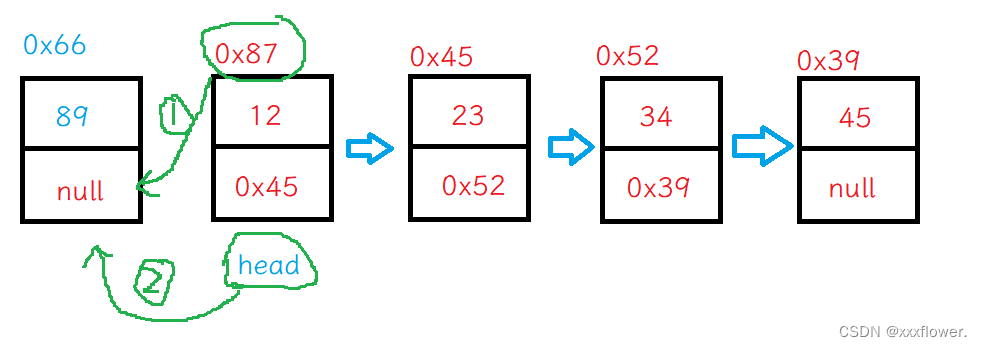
public void addFirst(int data){
ListNode node = new ListNode(data);
node.next = head;
head = node;
}
尾插法:
1…根据形参的数据创建一个节点node
1.找到尾部。定义一个cur。cur = this.head;
当cur.next == null时,即找到了尾部。
3.判断链表是否为空
4.将节点的node给尾部的next

public void addLast(int data){
ListNode node = new ListNode(data);
ListNode cur = this.head;
if(cur == null){
this.head = node;
}else{
while(cur.next != null){
cur = cur.next;
}
cur.next = node;
}
}
任意位置插入,第一个数据节点为0号下标:
首先判断index位置是否合法。
分三种情况,头插,尾插和中间插入
1.走index-1步,找到cur
2.ListNode node = new ListNode();
node.next = cur.next;1️⃣
cur.next = node;2️⃣
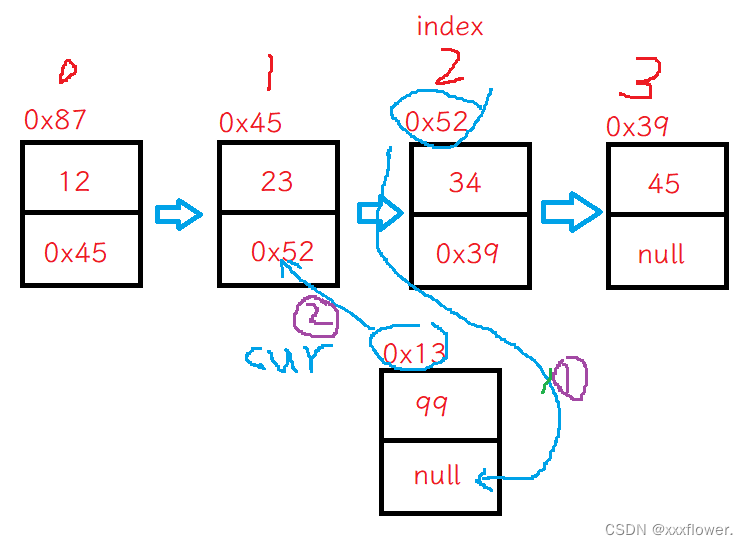
//任意位置插入,第一个数据节点为0号下标
public void addIndex(int index,int data){
if(index < 0 || index > this.size()){
System.out.println("index位置不合法!");
throw new IndexWrongfulExpection("index位置不合法!");
}
if(index == 0){
addFirst(data);
return;
}
if(index ==this.size()){
addLast(data);
return;
}
ListNode node = new ListNode(data);
ListNode cur = this.head;
while(index-1 != 0){
cur = cur.next;
index--;
}
node.next = cur.next;
cur.next = node;
}
查找是否包含关键字key是否在单链表当中:
1.判断链表是否为空?
2.写一个循环遍历数组找到cur.val == key
public boolean contains(int key){
if(this.head == null){
System.out.println("链表为空!");
return false;
}
ListNode cur = this.head;
while(cur != null){
if(cur.val == key){
return true;
}
cur = cur.next;
}
return false;
}
删除第一次出现关键字为key的节点
1.判断链表是否为空??
2.如果删除的是头结点??
3.写一个函数,封装起来,用于查找key的index的前一个值
4.删除
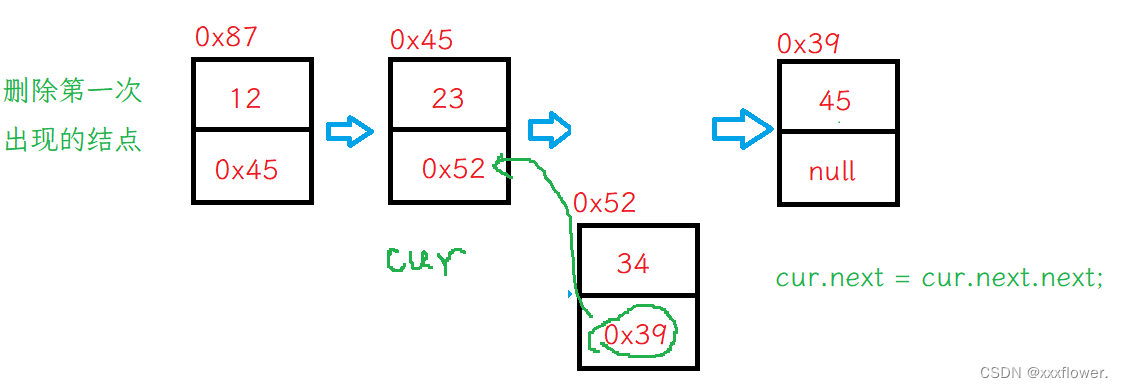
public void remove(int key){
if(this.head == null){
System.out.println("链表为空!");
return;
}
if(this.head.val == key){
this.head = this.head.next;
return;
}
ListNode cur = findPrevOfKey(key);
if(cur == null){
System.out.println("没有你要删除的数字!");
return;
}
ListNode del = cur.next;
cur.next = del.next;
}
private ListNode findPrevOfKey(int key){
ListNode cur = this.head;
while(cur.next != null){
if(cur.val == key){
return cur;
}
cur = cur.next;
}
return null;
}
//删除所有值为key的节点
- 链表是否为空??
- 如何删除?定义一个cur = head.next;再定义一个prev作为cur的前驱。
- 遍历链表。如果cur.val == key;prev.next = cur.next; cur = cur.next;
- 如果cur != key;prev = cur;cur = cur.next;
- 以上的方法不能解决头结点是key的情况,所以在需要判断一下头结点位key的情况下做以处理?
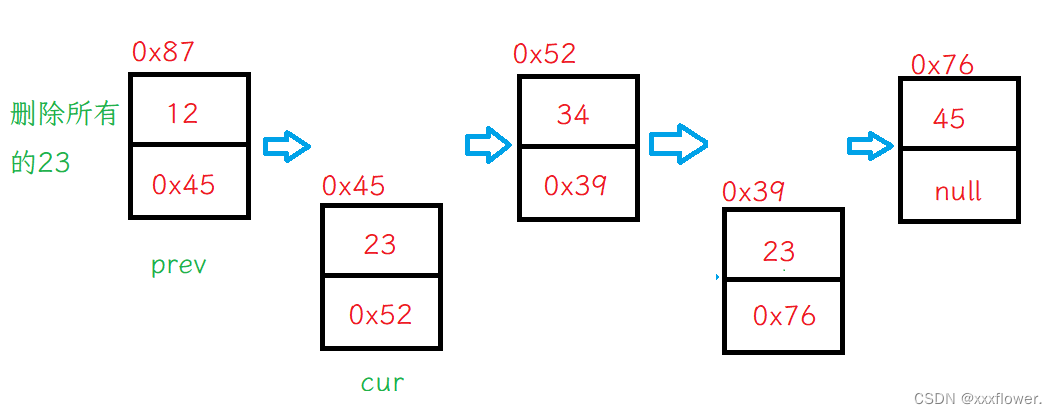
//删除所有值为key的节点
public void removeAllKey(int key){
if(this.head == null){
System.out.println("链表为空!");
return;
}
ListNode cur = this.head.next;
ListNode prev = head;
while(cur != null){
if(cur.val == key){
prev.next = cur.next;
cur = cur.next;
}else{
prev = cur;
cur = cur.next;
}
}
if(this.head.val == key){
this.head = this.head.next;
}
}
到这里我们对单链表就有一定的认识啦~

✿3.LinkedList
如图,为双向无头循环链表下面我们以此为例来实现双链表的操作。
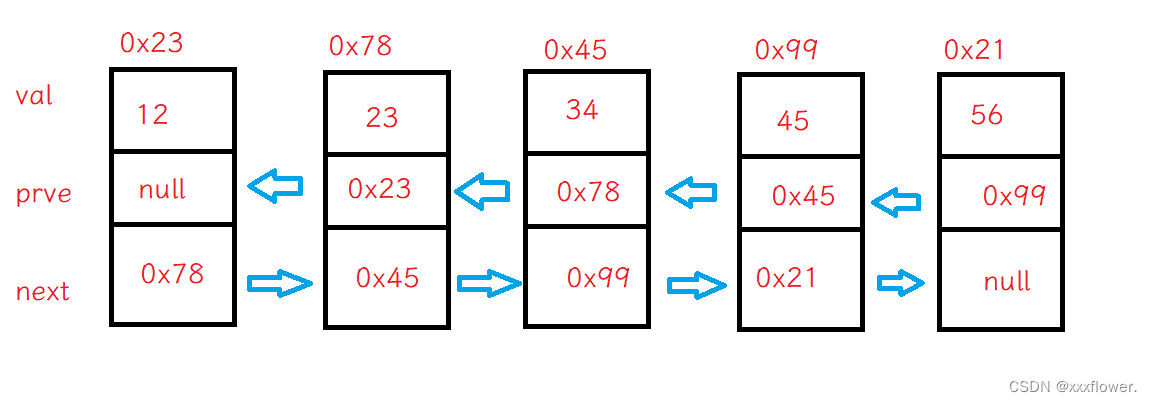
3.1LinkedList的模拟实现
MyLinkedList
首先使用内部类创建一个ListNode:
static class ListNode{
public int val;
public ListNode prve;
public ListNode next;
public ListNode(int val){
this.val = val;
}
}
头插法:
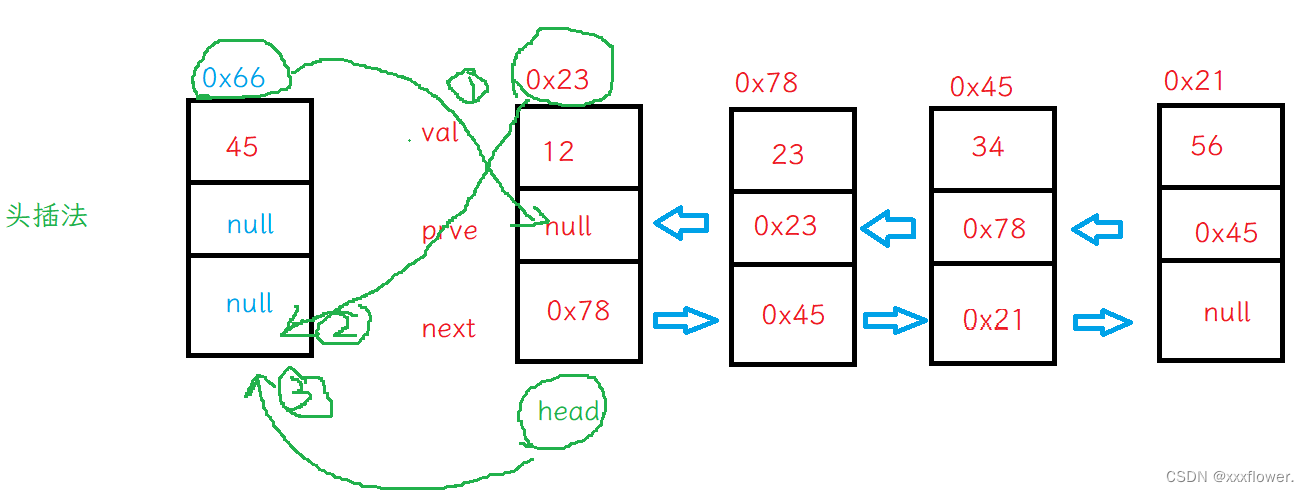
//头插法
public void addFirst(int data){
ListNode node = new ListNode(data);
if(this.head == null){
head = node;
tail = node;
}else {
head.prve = node;
node.next = head;
head = this.head.next;
}
}
尾插法:

//尾插法
public void addLast(int data){
ListNode node = new ListNode(data);
if(this.head == null){
this.head = node;
this.tail = node;
}
node.prve = tail;
tail.next = node;
tail = node;
}
任意位置插入,第一个数据节点为0号下标
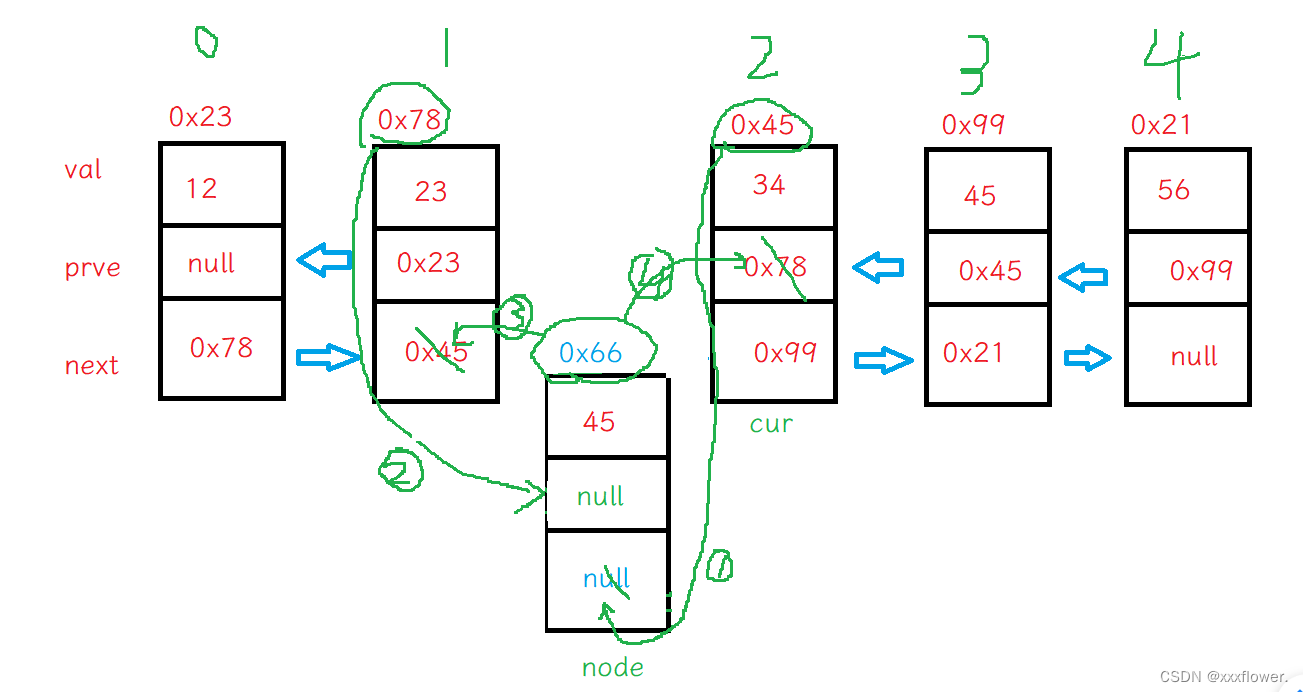
//任意位置插入,第一个数据节点为0号下标
public void addIndex(int index,int data){
//1.判断index位置的合法性
if(index < 0 || index > size()){
System.out.println("index位置不合法!");
throw new IndexWrongfulExpection("index位置不合法!");
}
//2.判断特殊位置
if(index == 0){
addFirst(data);
return ;
}
if(index == size()){
addLast(data);
return ;
}
//3.找到index位置节点的地址
ListNode node = new ListNode(data);
ListNode cur = findIndexListNode(index);
//4.修改指向
node.next = cur;
node.prve = cur.prve;
cur.prve.next = node;
cur.prve = node;
}
public ListNode findIndexListNode(int index){
ListNode cur = this.head;
while(index != 0){
cur = cur.next;
index--;
}
return cur;
}
查找是否包含关键字key是否在单链表当中
//查找是否包含关键字key是否在单链表当中
public boolean contains(int key){
ListNode cur = this.head;
while(cur != null){
if(cur.val == key){
return true;
}
cur = cur.next;
}
return false;
}
//删除第一次出现关键字为key的节点
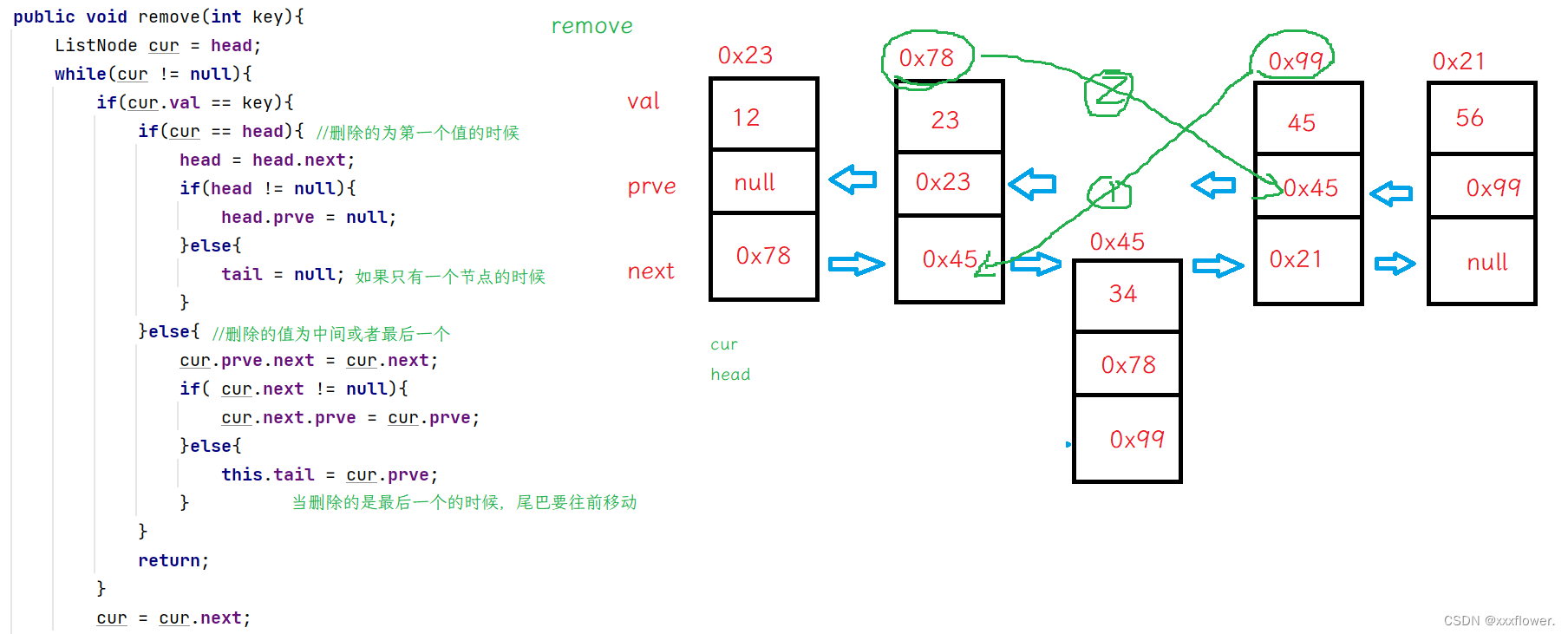
public void remove(int key){
ListNode cur = head;
while(cur != null){
if(cur.val == key){
if(cur == head){
head = head.next;
if(head != null){
head.prve = null;
}else{
tail = null;
}
}else{
cur.prve.next = cur.next;
if( cur.next != null){
cur.next.prve = cur.prve;
}else{
this.tail = cur.prve;
}
}
return;
}
cur = cur.next;
}
}
删除所有值为key的节点:此处和删除首个关键字值的代码大同小异。只需要遍历完整个链表即可。
//删除所有值为key的节点
public void removeAllKey(int key) {
ListNode cur = head;
while(cur != null){
if(cur.val == key){
if(cur == head){
head = head.next;
if(head != null){
head.prve = null;
}else{
tail = null;
}
}else{
cur.prve.next = cur.next;
if( cur.next != null){
cur.next.prve = cur.prve;
}else{
this.tail = cur.prve;
}
}
}
cur = cur.next;
}
}
双链表和单链表的部分函数写法思路是一样的。

✿4.LinkedList的使用
4.1 什么是LinkedList
LinkedList的底层是双向链表结构(链表后面介绍),由于链表没有将元素存储在连续的空间中,元素存储在单独的节点中,然后通过引用将节点连接起来了,因此在在任意位置插入或者删除元素时,不需要搬移元素,效率比较高。
在集合框架中,LinkedList也实现了List接口,具体如下:
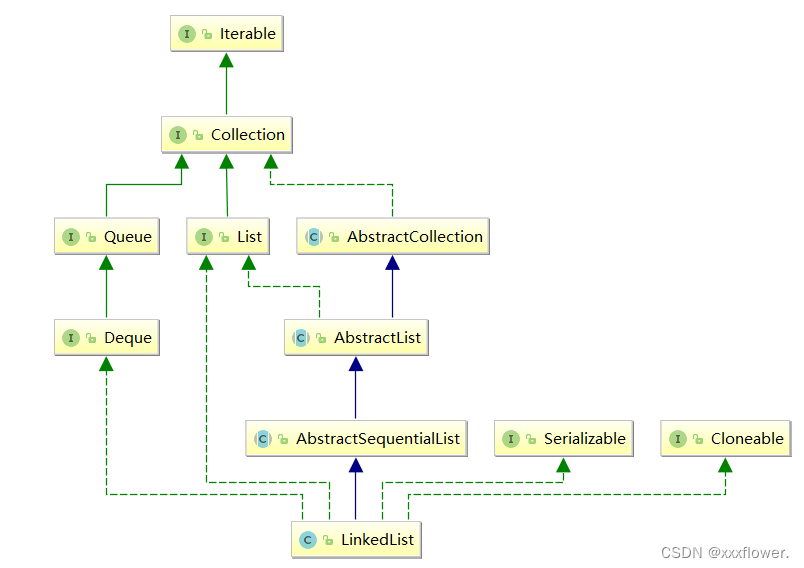
说明:
- LinkedList实现了List接口
- LinkedList的底层使用了双向链表
- LinkedList没有实现RandomAccess接口,因此LinkedList不支持随机访问
- LinkedList的任意位置插入和删除元素时效率比较高,时间复杂度为O(1)
4.2LinkedList的使用
详情见帮助手册。
这里偷个懒哈哈

✿5.ArrayList 和 LinkedList

ArrayList 和 LinkedList 的区别???






